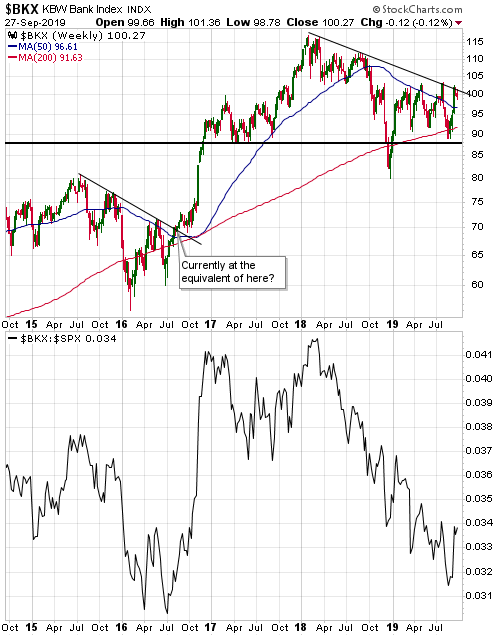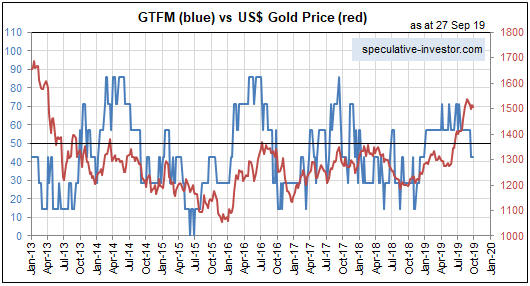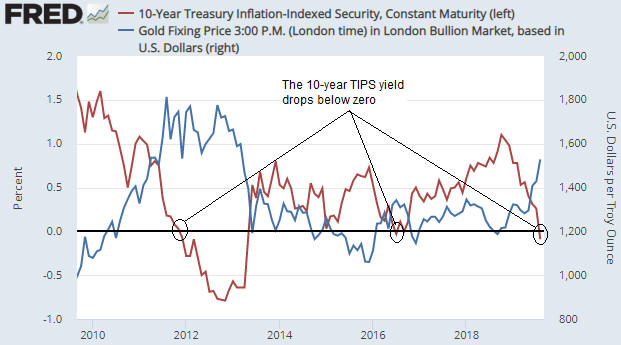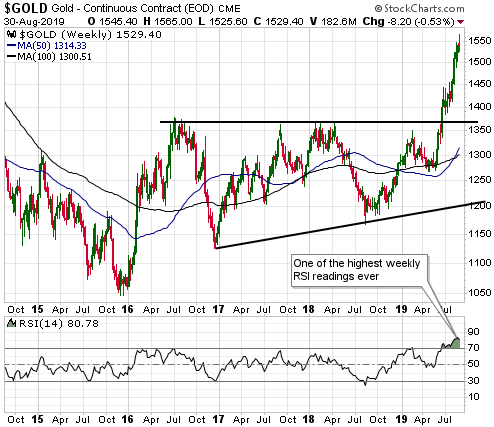One of the past month’s interesting stock-market developments was the strength of the banking sector in both nominal terms and relative to the broad market. The strength in nominal dollar terms is illustrated by the top section of the following weekly chart, which shows that the US Bank Index (BKX) is threatening to break out to the upside. The strength relative to the broad market is illustrated by the bottom section of the chart, which reveals a sharp rebound in the BKX/SPX ratio since the beginning of September.
Bank stocks tend to perform relatively well when long-term interest rates are rising in both absolute terms and relative to short-term interest rates. This explains why the banking sector outperformed during September and also why bank stocks generally have been major laggards since early last year.
Valuations in the banking sector are depressed at the moment, as evidenced by relatively low P/Es and the fact that the BKX/SPX ratio is not far from a 25-year low. This opens up the possibility that we will get a few quarters of persistent outperformance by bank stocks after long-term interest rates make a sustained turn to the upside.
On a related matter, the relative performance of the banking sector (as indicated by the BKX/SPX ratio) is an input to my “true fundamentals” models for both the US stock market and the gold market. However, when the input is bullish for one of these markets it is bearish for the other. In particular, relative weakness in the banking sector is considered to be bullish for gold and bearish for general equities.
Until recently the BKX/SPX input was bullish in my gold model and bearish in my equity model, but there was enough relative strength in the banking sector during the first half of September to flip the BKX/SPX input from gold-bullish to equity-bullish. As a consequence, during the second week of September there was a shift from bullish to bearish in my Gold True Fundamentals Model (GTFM). This shift is illustrated on the following weekly chart by the blue line’s recent dip below 50.
The upshot is that the fundamental backdrop, which was supportive for gold from the beginning of this year through to early-September, is now slightly gold-bearish. My guess is that it will return to gold-bullish territory within the next two months, but in situations like this it is better to base decisions on real-time information than on what might happen in the future.
 Print This Post
Print This Post




